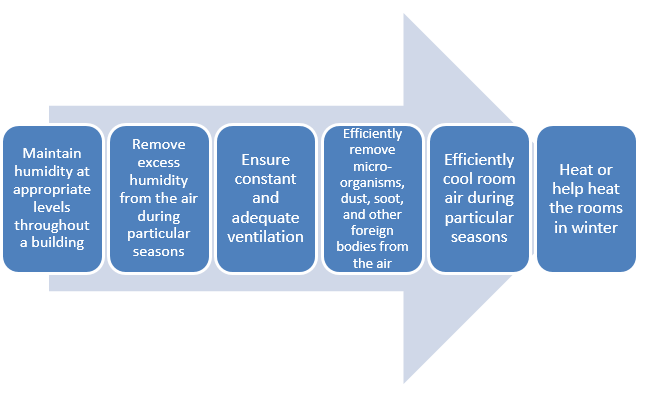A majority of homes and offices in warmer climates are equipped with air conditioners, where it is treated as a necessity rather than a luxury. An air conditioner, in a very basic sense works to move heat from inside your home or office to the outside, cooling you and your premise in the process. They are designed to blow cool air into your home or office by taking the heat out of that air.
Air conditioners are based on a simple law of physics; during the process of phase conversion when liquid converts to gas, it absorbs heat. Air is cooled by air conditioners by blowing air, over evaporator coils, which are essentially a set of cold pipes. The principle of cooling is the same as during evaporation of water from the skin. A special liquid called refrigerant is filled into the evaporator coils. This refrigerant changes from liquid to gaseous state as it absorbs the heat from the air, which is then pumped out of the house to another coil. There the refrigerant converts back to liquid state after giving up its heat. The outside coil is referred to as condenser since it is used to condense the refrigerant from gaseous state back to a liquid. Another component of an air conditioner is the compressor, which is basically a pump which works to ensure that the refrigerant moves between the two coils. It also works to change the refrigerant pressure to ensure that refrigerant evaporation and condensation happens in the appropriate coils.
Air conditioners have a variety of applications in a home of office setting apart from the obvious one of cooling a room. Key functions performed by an air conditioner include

In the days before air conditioning existed, people used ice – Big blocks of ice was used for cooling. With the advent of air conditioners, capacity started to get rated based on an equivalent amount of ice melted in a day. The term “ton” as a measure of air conditioning capacity has its origin in this early methods of measuring air conditioner capacity. In modern times, a ton of cooling is referred to an air conditioner with capacity to deliver 12,000 hour of cooling. A window air conditioner usually has a capacity of less than one ton, whereas a relatively small residential central air conditioner will have a capacity of approx. two tons and a large central air conditioner approximately five tons.
Air conditioners are complex mechanical systems dependant on a variety of conditions for efficient or optimal operations. Each of its components, whether it is the refrigerant or the coils or the compressor are designed to function to cater to a particular house of office load. When any of the components of an air conditioning unit are not working properly, the system will show signs of problems, like not producing as much cold air as is the standard output. Professional help is required in such cases for proper and thorough servicing of the air conditioning unit. Routine maintenance activities like filter changing can be undertaken on your own, but more complex cleaning typically requires a professional. It is a good idea to have a thorough servicing done on a periodic basis to ensure that your air conditioner delivers the maximum output while consuming the least amount of energy.